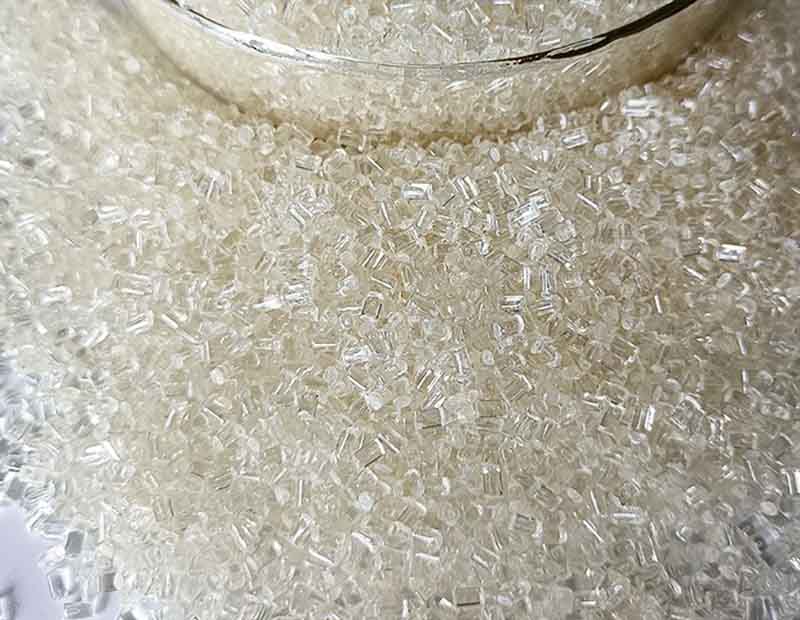PSU Raw Materials refer to the base form of Polysulfone (PSU), a high-performance thermoplastic polymer widely used in industries requiring exceptional heat resistance, durability, and chemical stability. In this article, we’ll explore PSU Materials properties, manufacturing processes, comparison with other high-performance plastics, and sustainability aspects.

1. Overview of PSU Materials
PSU Materials are part of the polysulfone family, known for their excellent dimensional stability, high glass transition temperature (~185°C), and mechanical strength. These high-temperature PSU materials are transparent to amber in color, offering a balance of toughness and rigidity.
Key features of PSU Raw Materials:
Exceptional heat resistance up to 170°C continuous service temperature.
Good chemical resistance to acids, alkalis, and detergents.
High hydrolytic stability – ideal for repeated steam sterilization.
Excellent electrical insulation properties across wide temperature ranges.
Common applications include medical devices, water filtration systems, electrical components, and aerospace parts.
2. Physical and Chemical Properties of PSU Raw Materials
When evaluating PSU raw materials properties, several physical and chemical characteristics stand out:
| Property | Typical Value |
|---|---|
| Glass Transition Temperature (Tg) | ~185°C |
| Continuous Service Temperature | 150–170°C |
| Tensile Strength | 70–85 MPa |
| Water Absorption (24h) | <0.3%<> |
| Chemical Resistance | Excellent against acids/alkalis |
Chemical resistance of PSU materials makes them suitable for environments with aggressive cleaning agents. However, they may be sensitive to strong oxidizers and certain hydrocarbons.
3. PSU Raw Materials Manufacturing Process
The PSU manufacturing process generally involves:
Condensation Polymerization – combining bisphenol A (BPA) or bisphenol S with dichlorodiphenyl sulfone under alkaline conditions.
Purification – removing impurities, solvents, and unreacted monomers.
Pelletizing – converting into granules for easy processing.
Quality Control – testing melt flow, thermal stability, and mechanical strength.
Processing methods for PSU materials include injection molding, extrusion, and thermoforming. Pre-drying is crucial to avoid moisture-related defects during molding.
4. PSU vs PPSU vs PEEK: A High-Performance Plastics Comparison
| Property | PSU | PPSU | PEEK |
|---|---|---|---|
| Max Continuous Use Temp | 170°C | 180°C | 250°C |
| Impact Resistance | Good | Excellent | Excellent |
| Transparency | Transparent/Amber | Transparent/Amber | Opaque (usually beige) |
| Cost | Moderate | Higher than PSU | Much higher |
| Chemical Resistance | Good | Better than PSU | Outstanding |
PPSU (Polyphenylsulfone): Higher impact and chemical resistance than PSU; widely used in healthcare and aerospace.
PEEK (Polyetheretherketone): Best high-temperature and chemical resistance; premium price point.
For buyers comparing PSU vs PPSU vs PEEK, PSU offers the best balance between cost and performance.
5. Sustainability and PSU Plastic Recycling
Sustainability in PSU raw materials is becoming a key consideration for manufacturers:
Long life cycle reduces replacement frequency and waste.
PSU plastic recycling process allows reprocessing of clean scrap into new products.
Ongoing research in chemical recycling of PSU materials aims to depolymerize waste into reusable monomers.
Environmentally conscious production methods include minimizing solvent usage, optimizing energy consumption, and adopting closed-loop manufacturing systems.
PSU Raw Materials deliver outstanding thermal stability, mechanical performance, and chemical resistance, making them a reliable choice for demanding industries. Whether in medical devices, water treatment systems, or aerospace components, PSU materials remain an essential high-performance plastic. With advances in recycling and eco-friendly manufacturing, PSU continues to be a sustainable material choice for the future.






